Introduction to Chinese Cuisine: The Eight Regions
July 19, 2019
Popular Chinese dishes such as hotpot, kungpao chicken, and beef noodles rightfully have earned fame, but what if I told you there is more? Historically, there are eight types of traditional Chinese cuisine, collectively known as 中国八大菜系 zhōngguó bādà càixì.
These eight traditional Chinese cuisines can be subdivided into Northern and Southern varieties.
01 鲁菜 Lǔcài
02 川菜 Chuāncài
03 湘菜 Xiāngcài
04 徽菜 Huīcài
05 苏菜 Sūcài
06 浙菜 Zhècài
07 闽菜 Mǐncài
08 粤菜 Yuècài
What is Beijing cuisine like?
What is Shanghainese cuisine like?
Which Chinese cuisine is spiciest?
What is the staple food in China?
In the Northern category, we have:
01 鲁菜 Lǔcài
Fun Fact:
Confucius was from this area.
Where to Find It:
Shandong Province
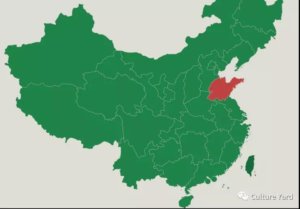
Characteristics:
Found mainly along the coast, lǔcài is heavy on the seafood. Clear soups are also popular. Salt, vinegar, and onions are heavily used ingredients.
Foods You Might Know:
Scallion pancakes 葱油饼 cōng yóubǐng
Candied yam 拔丝地瓜 básī dìguā
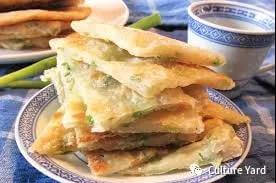
02 川菜 Chuāncài
Fun fact:
Chuāncài is the most widely served traditional Chinese cuisine across China.
Where to Find It:
Sichuan Province
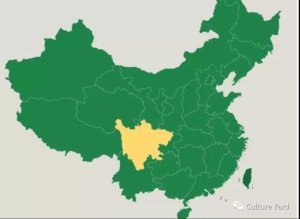
Characteristics:
Chuāncài often includes chili, garlic, ginger, and peanuts. It also features Sichuan peppercorns which contribute to the numbing flavor characteristic of the region.
Foods You Might Know:
Mapo tofu 麻婆豆腐 mápó dòufu
Kungpao Chicken 宫保鸡丁 gōng bǎo jī dīng
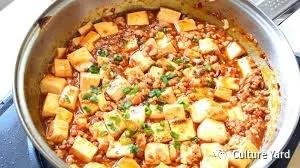
03 湘菜 Xiāngcài
Where to Find It:
Hunan Province
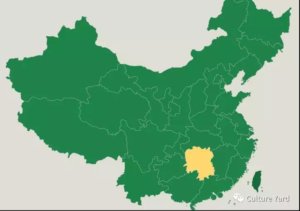
Characteristics:
Very spicy! Unlike chuāncài, xiāngcài is not numbing. You will feel every tingling, burning ounce of the pepper + vinegar concoction which is such a popular flavoring. Otherwise, crunchy vegetables, pickling, and fermentation are also popular.Foods You Might Know:
Braised pork 红烧肉 hóngshāo ròu
Dry pot dishes 干锅 gān guō
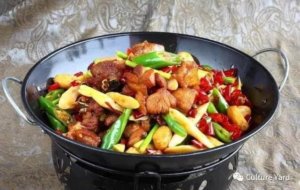
04 徽菜 Huīcài
Where to Find It:
Anhui Province, Yellow Mountains
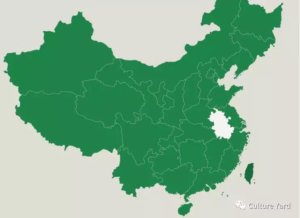
Characteristics:
Ingredients often consist of wild plants and animals, including frog, turtle, pork, mountain herbs, and fungi. Cooking methods tend to be simple. As Anhui is a poorer province, huīcài is considered among the traditional Chinese cuisines to be peasant food.
Foods You Might Know:
Sweet potato noodles 红薯粉丝 hóngshǔ fěnsī
Preserved pork and bamboo shoots 火腿炖鞭笋 huǒtuǐ dùn biān sǔn

In the Southern category, we have:
05 苏菜 Sūcài
Fun fact:
Sūcài is considered gourmet, making it a popular choice for government banquets.
Where to Find It:
Jiangsu Province
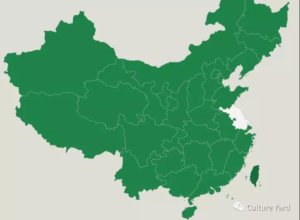
Characteristics:
Seafood! Jiangsu is coastal, so it makes sense that chefs would utilize the resources at their disposal. Soups are a key dish, and plated food often employs fancy cutting techniques.
Within sūcài, there are six substyles: Huaiyang (most popular substyle of sūcài and the usual style for banquets), Nanjing, Yangzhou, Suzhou, Xuzhou, and Haizhou.
Foods You Might Know:
Lion's Head Meatballs 狮子头 shīzi tóu
Soup Dumplings 小笼包 xiǎo lóng bāo
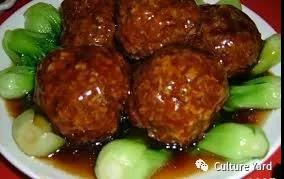
06 浙菜 Zhècài
Where to Find It:
Zhejiang Province
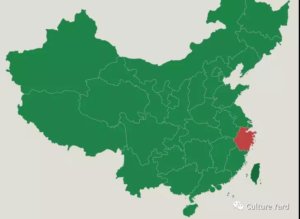
Characteristics:
Zhècài is comprised of much fish and seafood. Flavors tend to be mellow and food is often served raw or almost raw. Chefs favor fresh, seasonal ingredients.
Within Zhècài, there are three substyles: Hangzhou, Ningbo (famous for its salty brine stewing process), and Shaoxing.
Foods You Might Know:
Dongpo Pork 东坡肉 dōngpō ròu
West Lake Sweet and Sour Fish 西湖醋鱼 xīhú cù yú
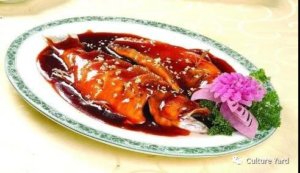
07 闽菜 Mǐncài
Where to Find It:
Fujian Province
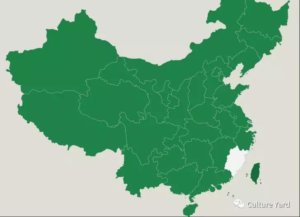
Characteristics:
Mǐncài sources ingredients from both seafood and mountain plants. Red rice wine is a popular cooking ingredient (hence the “drunken” dishes that are so famous). There is also a heavy emphasis on soup.
Within mǐncài, there are three substyles: Western Fujian, Southern Fujian, and Fuzhou.
Foods You Might Know:
Oyster Pancakes 蚵仔煎 hézǐ jiān
Buddha Jumps Over the Wall 佛跳墙 fútiàoqiáng
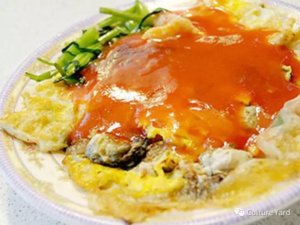
08 粤菜 Yuècài
Fun Fact:
Yuècài incorporates a variety of ingredients many foreigners are not used to.
Where to Find It:
Guangzhou, Shenzhen, Hong Kong, Macau
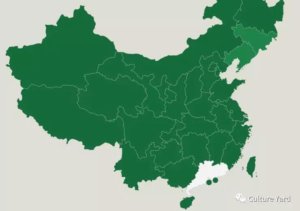
Characteristics:
Yuècài focuses on seafood and rice dishes. Ingredients include lightly cooked fresh vegetables and meat, and sweet sauces. Flavors tend to be sweeter and popular cooking methods include braising and stewing.
Foods You Might Know:
Roast Pork Buns 叉烧包 chāshāo bāo
Egg Tarts 蛋塔 dàn tǎ
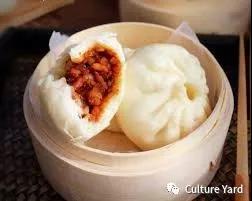
Whatever flavor, color, or texture you are craving, one of the eight traditional Chinese cuisine categories is sure to have what you are looking for. Trying them all is a great reason to learn Chinese!
What is Beijing cuisine like?
You may have noticed that Beijing cuisine or Jing cuisine is not part of the Eight Regions of Traditional Chinese cuisine.
However, it is worth noting that traditional Beijing cuisine is what royalty and high-ranking officials used to eat at the Forbidden City during the imperial era. Despite heavy influences from surrounding areas, the Jing cuisine evolved into a distinct style of Chinese cuisine overtime, with bold flavors, hearty ingredients, and elaborate cooking techniques.
Popular Beijing foods include the world-famous crispy-skinned Peking Roast Duck and Zhajiangmian, which are both part of the best Chinese foods that everyone must try.
What is Shanghainese cuisine like?
Though not part of the Eight Major Regions of Chinese, Shanghainese cuisine is also popular and worth mentioning.Shanghainese cuisine is known for its unique balance of sweet and savory flavors, and with a focus on seafood and local ingredients.
Some of the most popular Shanghai foods are Shanghainese dim-sum including 小笼包 xiǎo lóng bāo(soup dumplings) and 生煎包 shēng jiān bāo (pan-fried buns).
Which Chinese cuisine is spiciest?
Sichuan cuisine and Hunan cuisine are the spiciest of all Chinese cuisines, so if you like your food hot and fiery, these are what you'd want to try.Nonetheless, there are a few notable differences between Sichuan cuisine and Hunan cuisine.
While Sichuan cuisine often uses Sichuan peppercorns in addition to chilis, making it spicy and numbing, Hunan cuisine gets its heat solely from chilis. Sichuan food also tends to use a variety of spices, while Hunan food is less complex and hotter, with the occasional addition of garlic, ginger and onions.
Lastly, peanuts are a common ingredient in Sichuan cuisine, so you want to be careful when having Sichuan food if you have peanut allergy. You might also find this article on what to look out for when eating in China if you have peanut allergy helpful.
What is the staple food in China?
Generally, rice is the staple food in Southern China, while wheat-based dishes are preferred in the North, such as noodles, dumplings and bread.In conclusion, the Eight Traditional Chinese cuisines reflect the geographical and cultural diversity of China, with a unique blend of flavors and textures, bringing together a truly exciting culinary experience. Writing this blog has made us really hungry, so here is where we leave you. Time to go introduce our stomachs to a new Chinese cuisine!
- Now that you know what dishes to try next time you dine out, learn how to order them in simple Chinese!
About the Author
Eden has been learning Chinese since 2008. She fell in love with the language, food, and culture and never looked back! Eden lived in China for six years, including in Harbin, Beijing, and Dali.